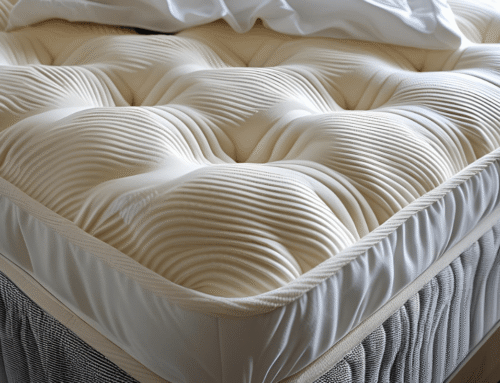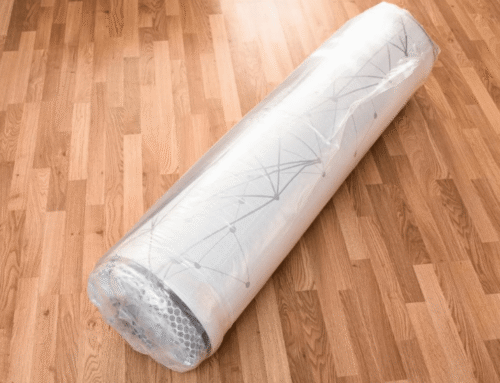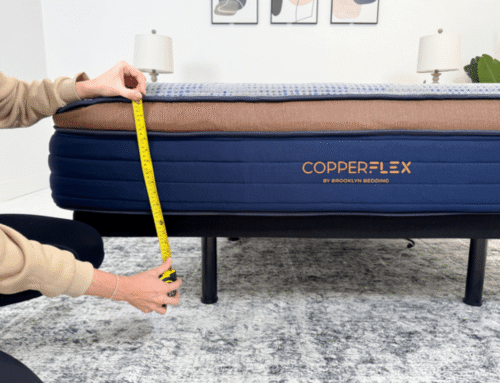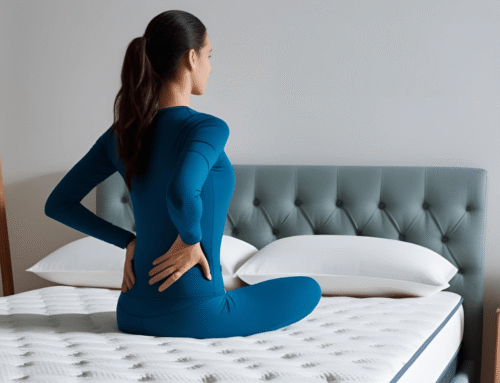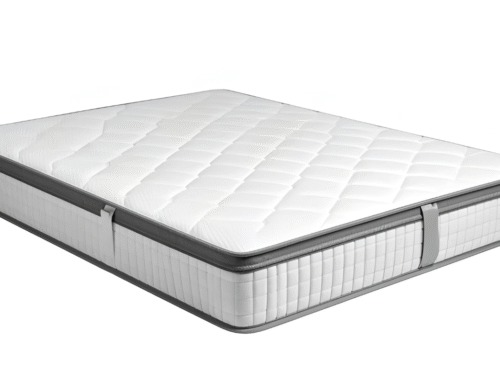A soft mattress feels great at first, but too much sinking causes back or hip pain. A firmer pillow under your head keeps your spine aligned, and placing one under your lower back or knees adds extra support. A medium-loft pillow is great for side or back sleepers since it keeps the neck from bending awkwardly.
But what is a soft mattress, what is it good for, and how do you make it firmer or fix a too soft mattress? Some mattresses feel too plush, though a firm mattress topper evens out softness and support. Latex or high-density foam keeps the body from sinking too much, and the bed still feels cozy. Sharing a mattress gets tricky when one person sinks more, but a topper helps distribute weight more evenly.
Changing sleep positions also helps. Sleeping on your back reduces pressure on your joints, and a slight incline under your legs helps with lower back pain. Side sleepers feel more comfortable with a pillow between their knees since it keeps the hips aligned. We’ll walk you through other simple ways to sleep better on a soft mattress.
Key Takeaways
- A high-quality pillow helps keep the neck aligned and offsets the softness of your mattress. This ensures both your head and neck stay supported through the night.
- When a mattress feels too soft, a firmer topper adds needed support and limits sinking. This simple addition can boost overall comfort and improve sleep quality.
- Some sleep positions work better on a soft mattress. Side sleeping often eases pressure points, while back sleepers may need extra support to keep the spine aligned.
- Watch for red flags like waking up with back pain, feeling trapped in your mattress, or struggling to shift positions. These may signal that the bed is too soft.
- Your sleep position and body type affect how you experience mattress softness. Softer beds often suit side sleepers and lighter individuals, while back or stomach sleepers, and those with more body weight, may need firmer support for proper alignment.
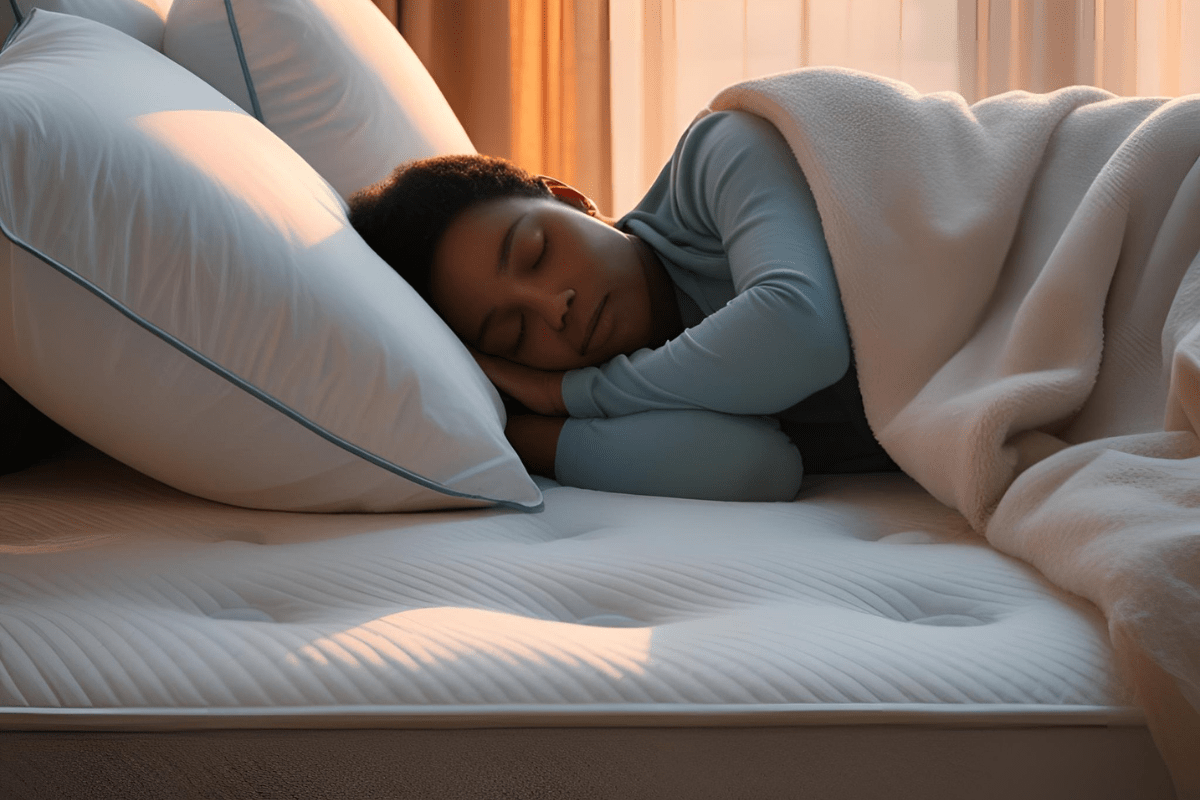
Why Choose a Soft Mattress?
A soft mattress feels plush and cozy. It molds your body while easing pressure on your joints. Side sleepers get extra cushioning around the hips and shoulders, which helps prevent soreness. Some people love a deep and cradling feel, but others prefer something with less sink.
Determining the ideal mattress depends on personal comfort and support needs, whether comparing a soft and medium option, considering the benefits of soft and firm, or deciding which firmness level offers the best balance for restful sleep.
Back and stomach sleepers may not get enough support, so spinal alignment becomes an issue. A firmer mattress keeps the back in a neutral position, and some softer options include lumbar support to reduce stiffness.
Softness and support should work together, or sleep becomes uncomfortable. A supportive pillow or mattress topper adds structure, so the body stays aligned without stiffness. Testing different options provides a better sense of what suits your sleep style.
Use a Supportive Pillow
Sleeping on a soft mattress is great, but the wrong pillow can throw everything off. You need one that supports your head and neck without sinking too much. A pillow that’s too flat or too thick can mess with your alignment and leave you sore in the morning.
Memory foam and adjustable pillows help because they mold to your shape and give just the right support. Some let you add or remove filling, so you can tweak the height until it feels right. Latex is another solid option if you want something supportive without that sinking feeling.
The goal is to keep your neck in line with your spine, so you don’t wake up stiff. A good pillow should feel comfortable without pushing your head too far forward or letting it drop back. Testing a few options might help you figure out what works best.
Add a Mattress Topper for Extra Support
A too-soft mattress can leave you waking up sore, especially if you need more support. A firm mattress topper helps add structure without replacing your whole bed. Latex and memory foam are good options since they add firmness while still contouring to your body.
Latex toppers tend to feel more responsive, so you won’t sink too much. Memory foam molds to pressure points but keeps a sturdy base underneath. Both can improve alignment, which helps with back and joint pain. Choosing the perfect firmness is important since a mattress that is too soft can worsen lower back pain, while a firmer surface provides better spinal support. Finding ways to sleep comfortably on a soft mattress with a bad back starts with adding extra reinforcement where needed.
Toppers also extend the life of your mattress by adding a protective layer. Instead of dealing with a sagging surface, a firmer topper helps maintain an even feel. It’s an easy way to get extra support without investing in a new mattress.
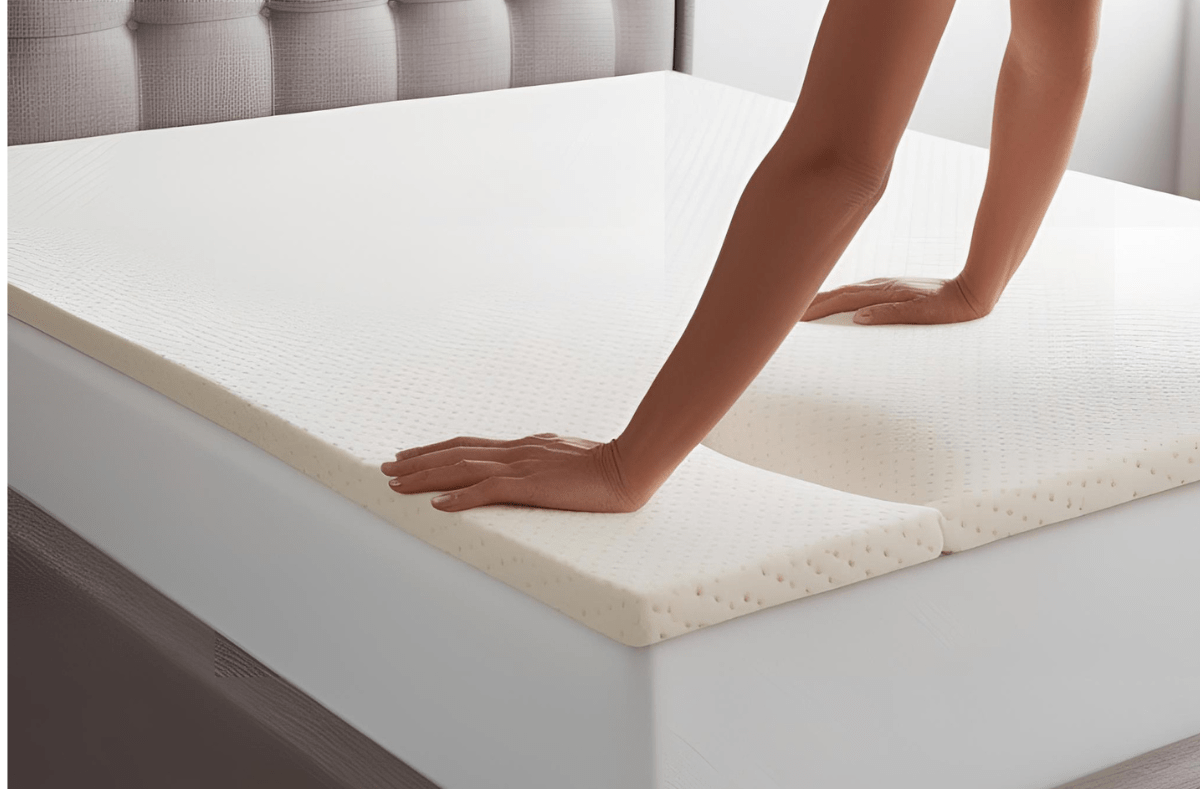
Adjust Your Sleep Position
A softer mattress helps take the pressure off your shoulders and hips, so you wake up without that stiff, achy feeling. Too firm, and it pushes against your body instead of supporting it. A good balance keeps you comfortable without sinking too much.
For back sleepers, lower back support helps. A small pillow under that area helps maintain the spine’s natural curve, keeping things aligned. Without it, you might feel some strain, especially after long hours of sleep.
Stomach sleeping can be tough on the neck and back, but a thin pillow helps avoid awkward angles. A pillow under your pelvis can also keep your lower back from arching too much, so you don’t wake up sore. If stomach sleeping feels uncomfortable, switching positions might be worth trying.
Use a Firm Foundation
Your mattress feels different depending on what it sits on. A solid platform or a slatted frame with narrow gaps keeps everything stable, while a box spring can feel too bouncy or uneven over time. Some foam and hybrid mattresses even require a firmer base to prevent sagging.
A sturdy foundation helps with comfort and durability. Without proper support, your mattress may wear out faster, which can lead to dips and uneven spots. Slats should be no more than a few inches apart to keep everything in place, especially with heavier beds.
Good support also enhances sleep quality since a well-supported mattress stays level and reduces pressure points. An unstable foundation causes lumps or a sinking feeling, and motion transfer becomes more noticeable. A simple upgrade to a stronger base helps maintain comfort and overall sleep performance.
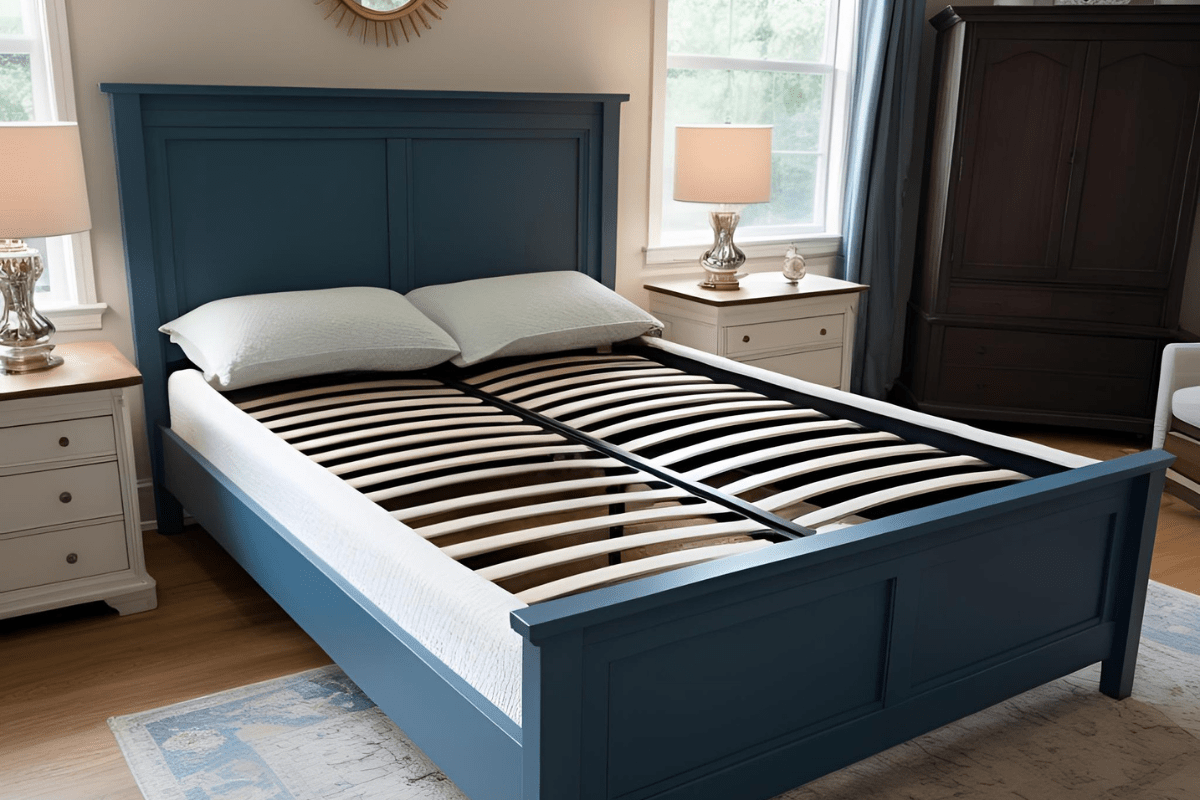
Rotate Your Mattress Regularly
Soft mattresses tend to form body impressions over time, especially if you sleep in the same spot every night. Flipping isn’t an option for most modern mattresses, but rotating every 3-6 months helps keep the surface even. This simple habit prevents one side from wearing out faster than the rest.
You might not notice changes right away, but an uneven surface affects support and comfort in the long run. A mattress that sags too soon can lead to back pain or restless sleep. Regular rotation helps maintain a balanced feel, so you’re not sinking into the same spots night after night.
Some materials, like memory foam, are more prone to impressions, while firmer options hold their shape longer. Regardless of firmness, rotation helps extend the lifespan of your mattress. It’s an easy way to keep your bed feeling supportive without needing a replacement too soon.
Maintain Proper Posture
Sliding into bed the wrong way can leave you sore in the morning. Keep your spine in a neutral position and avoid awkward angles that put pressure on your back. A little adjustment goes a long way in keeping muscles relaxed.
A lumpy mattress or too-soft pillows can throw off your alignment. A supportive surface helps maintain a natural curve, so you don’t wake up feeling stiff. Try a pillow that keeps your neck level with your spine for better comfort.
Tossing and turning too much strains your body more than you’d think. If something feels off, check your sleeping position and adjust before settling in. Changing your sleep position can prevent a lot of discomfort later.
Signs That Your Mattress Is Too Soft
A soft mattress feels nice at first, but too much give can lead to discomfort. Waking up with back or neck pain usually means your spine lacks proper support. Sinking too deep into the bed can throw off alignment, making it harder to feel rested.
Finding the ideal comfort and support is essential for spinal health. A firmer mattress can provide better support for back pain, while a softer option may offer more pressure relief. The choice between a hard or soft mattress affects overall health, sleep quality, and posture.
If the mattress stays compressed long after getting up, that’s another warning sign. Over time, the materials break down and create permanent dips. An uneven surface makes sleep uncomfortable, forcing you to shift positions all night.
Struggling to get comfortable or feeling restless could mean the mattress isn’t firm enough. A firmer topper adds some support, though sometimes a replacement is the better fix. Talking to a sleep expert can also help find the right balance for better rest.

Additional Tips for a Better Sleep Experience
A cool and dark room helps you fall asleep faster. Blackout curtains block unwanted light, and a fan or air conditioner keeps the air comfortable. Even small adjustments like dimming the lights before bed tell your body it’s time to wind down.
A steady sleep schedule improves rest. Going to bed and waking up at the same time trains your body to feel tired and alert at the right moments. Avoiding screens late at night and reading or listening to soft music instead makes it easier to drift off.
Comfortable bedding affects sleep quality. Cotton and bamboo sheets feel breathable, and a good mattress with the right pillows prevents soreness. If your bed feels too warm, switching to moisture-wicking sheets or a cooling pillow can help.
Final Thoughts
Sleeping on a soft mattress comfortably requires a few adjustments, but small changes help a lot. A supportive pillow keeps your neck aligned, and a firmer mattress topper prevents sinking too deep. The right setup keeps your body at ease without putting stress on your spine.
Sleep positions matter more than you think. Side sleepers do best with a pillow between their knees to keep their hips aligned, while back sleepers benefit from one under their lower back. Stomach sleeping isn’t ideal, but if it’s a habit, a thin pillow under the pelvis eases pressure.
Pay attention to how your body feels after waking up. If soreness lingers, switching positions or adding extra support might help. Testing different setups leads to better sleep, and once everything falls into place, a soft mattress feels much more comfortable without causing aches.

